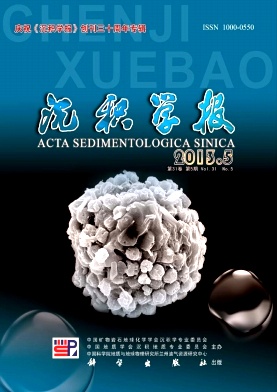A New Type of Sedimentary Rocks: Mantle Originated Hydroclastites and Hydrothermal Exhalites, Santanghu Area, Xinjiang, NW China
- Publish Date: 2013-10-10
-
Key words:
- hydroclastites and hydrothermal exhalites /
- mantle-originated /
- Permian /
- Santanghu
Abstract: The Lower Permian Lucaogou Formation in Santanghu area, Xinjiang, NW China contains new types of sedimentary deposits mantle-originated hydroclastites and hydrothermal exhalites, which are characterized by a subsurface source. The rocks occur as mm-laminae with a great total thickness and have a variety of composition, texture, and structures. They contain abundant mantle-originated hydrothermal minerals and microscopic hydroclastic magmatic fragments, and can be classified into five types on the basis of sediment source and grain composition, sedimentary texture and structure, and interpreted forming mechanisms: 1) fall-out phreatomagmatic hydroclastite, formed by fall out of fine magmatic ash generated by hydroclastic explosion; 2) surge phreatomagmatic hydroclastite, formed by base surge of coarse magmatic fragments generated by hydroclastic explosion; 3) hydrothermal exhalite, formed by chemical precipitation from hydrothermal exhalative fluids and containing typical minerals associated with "black and white smokers"; 4) peperite composed of admixtures of hydroclastic, hydrothermal, and normal lacustrine chemical sediments; and 5) microbialite composed of biogenic minerals produced by thermophilic and toxin-loving microbes. All these rocks were deposited in a starved lake in an intracontinental rift basin. The grain composition suggests that hydroclastic and hydrothermal processes were originated from a great depth and related to mantle-derived magmas. The interlamination of these rocks suggests that hydroclastic, hydrothermal, and normal lacustrine processes were alternating and episodic.
| Citation: | A New Type of Sedimentary Rocks: Mantle Originated Hydroclastites and Hydrothermal Exhalites, Santanghu Area, Xinjiang, NW China[J]. Acta Sedimentologica Sinica, 2013, 31(05): 773-781. |






 DownLoad:
DownLoad: